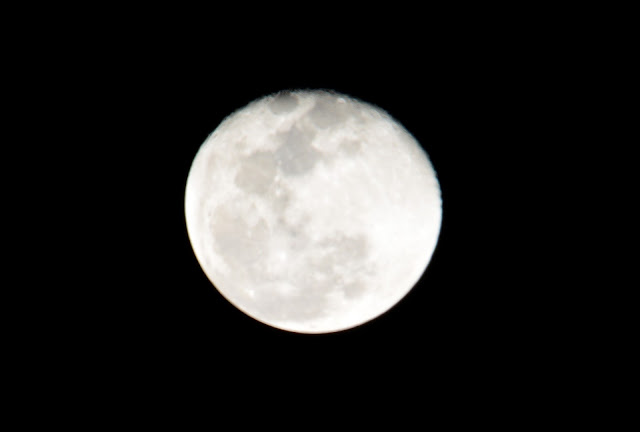Shoot the Moon?
No, this is not some college prank post! 😁 Have you ever wanted to go out and take that perfect shot of the moon, but no matter how hard you try it just doesn't want to work? Of course you have. We all have! You even resort to the dreaded "P" mode, and this is what you get...
And yet, you know that people are out there getting shots that look something like this...
These were taken of the same moon, the same night, within minutes of one and other. What's the secret?
First off - USE A TRIPOD! Even though both of these were shot on the same tripod, there's still more.
Second item of business is manual mode - across the board. NO auto-ISO, NO auto-focus, No auto-aperture, and no auto-shutter control. Yeah, I know - FULL MANUAL? Absolutely. And there is more.
Third item - get your shutter release and set it up. If you have live mode, use it. You are going to be shooting a long exposure, and these are essential to remove camera shake, even from the shutter action.
Okay, now that we have been slapped on the wrist with the ruler, just how do we get a shot like this? Begin with a nice long lens - in this case I used my Sigma 150-500 with a 2x teleconverter. This was also shot on my Nikon D-810. You don't need all this, but if you've got it, use it. Ideally, you want to fill the viewfinder with the moon so as not to waste any of those hard earned pixels.
You want detail, and that takes time. In this case, 1/2 a second. ISO was set at 100, and the aperture was at f/29. It really is a bright moon, so you want to stop down the camera and get the most out of that lens, especially if using a teleconverter. This will not only give you more detail in the moon, but it will also help to create that really dark sky to accentuate the contrast.
If you're not capturing the image to show off the beautiful orange color from the sunset, you may want to consider using black and white mode to help with the detail. These were shot in color.
These are not the only way to get this type of shot, but it should serve as a good starting point for you to play with. Try to vary the settings until you are happy with what you see. If you don't have a good teleconverter, you're probably better of just cropping your image. I have taken many really great moon shots with a relatively inexpensive 300mm zoom lens on 10MP cameras, so don't think that you can't do it without a lot of expensive gear.
As a side note, my wife says she won't be happy until she can get a picture of the flag on the moon. I won't repeat the subsequent conversation, but suffice it to say that she has been advised to go for perhaps a slightly lesser goal! LOL
Most importantly, get outside, set up your tripod, pull up a seat, and have some fun experimenting with different settings. On a really bright moon, such as this one was, I have gone so far as to use an ND filter also. Remember, winter usually gives a little better chance of a good moon shot because of the atmospheric distortion. But what do I know - I like taking shots of the full, or nearly full, moon every chance I get.
Enjoy your night time shooting, and keep the shutter clicking!
Bob





Comments
Post a Comment